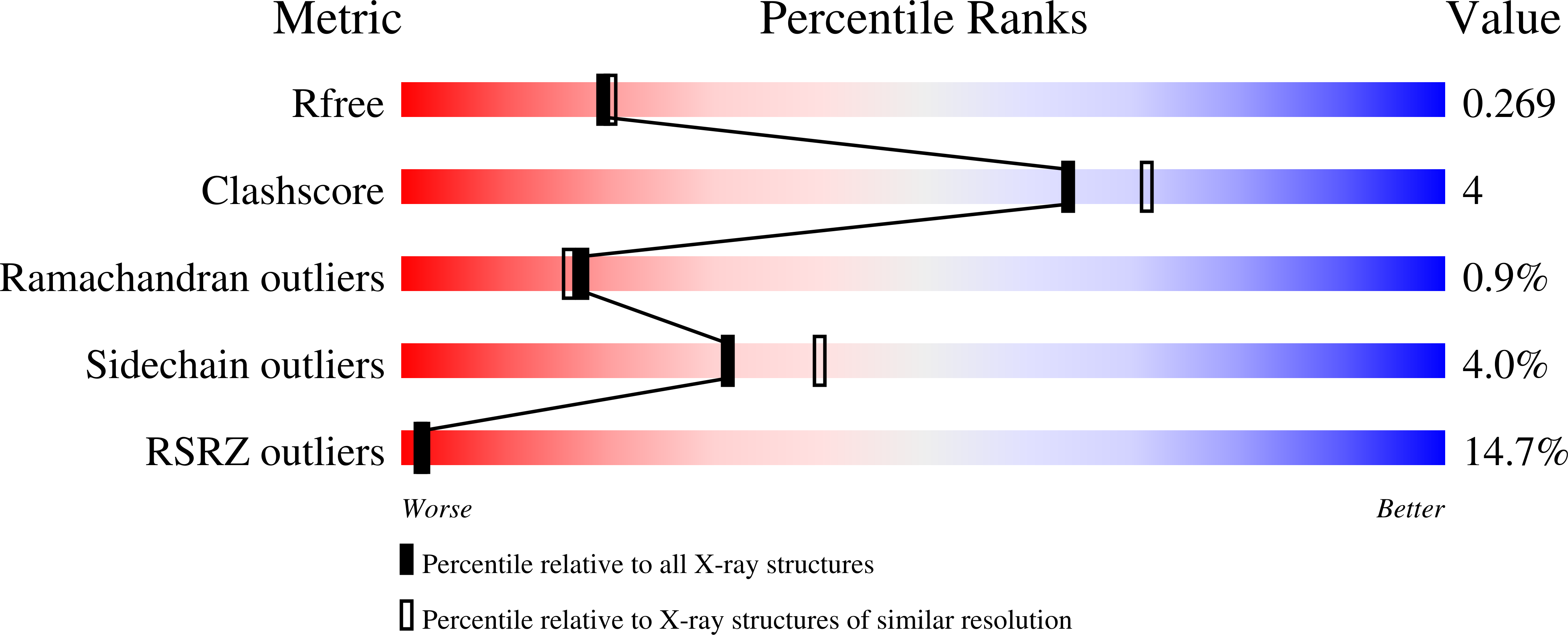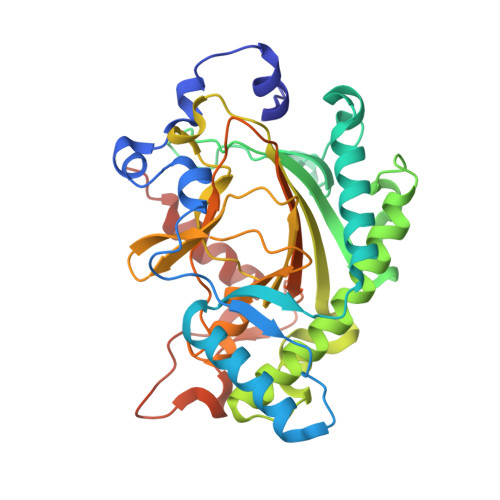Structural and Mechanistic Studies on Anthocyanidin Synthase Catalysed Oxidation of Flavanone Substrates: The Effect of C-2 Stereochemistry on Product Selectivity and Mechanism
Welford, R.W.D., Clifton, I.J., Turnbull, J.J., Wilson, S.C., Schofield, C.J.(2005) Org Biomol Chem 3: 3117
- PubMed: 16106293
- DOI: https://doi.org/10.1039/b507153d
- Primary Citation of Related Structures:
2BRT - PubMed Abstract:
During the biosynthesis of the tricyclic flavonoid natural products in plants, oxidative modifications to the central C-ring are catalysed by Fe(ii) and 2-oxoglutarate dependent oxygenases. The reactions catalysed by three of these enzymes; flavone synthase I, flavonol synthase and anthocyanidin synthase (ANS), are formally desaturations. In comparison, flavanone 3beta-hydroxylase catalyses hydroxylation at the C-3 pro-R position of 2S-naringenin. Incubation of ANS with the unnatural substrate (+/-)-naringenin results in predominantly C-3 hydroxylation to give cis-dihydrokaempferol as the major product; trans-dihydrokaempferol and the desaturation product, apigenin are also observed. Labelling studies have demonstrated that some of the formal desaturation reactions catalysed by ANS proceed via initial C-3 hydroxylation followed by dehydration at the active site. We describe analyses of the reaction of ANS with 2S- and 2R-naringenin substrates, including the anaerobic crystal structure of an ANS-Fe-2-oxoglutarate-naringenin complex. Together the results reveal that for the 'natural' C-2 stereochemistry of 2S-naringenin, C-3 hydroxylation predominates (>9 : 1) over desaturation, probably due to the inaccessibility of the C-2 hydrogen to the iron centre. For the 2R-naringenin substrate, desaturation is significantly increased relative to C-3 hydroxylation (ca. 1 : 1); this is probably a result of both the C-3 pro-S and C-2 hydrogen atoms being accessible to the reactive oxidising intermediate in this substrate. In contrast to the hydroxylation-elimination desaturation mechanism for some ANS substrates, the results imply that the ANS catalysed desaturation of 2R-naringenin to form apigenin proceeds with a syn-arrangement of eliminated hydrogen atoms and not via an oxygenated (gem-diol) flavonoid intermediate. Thus, by utilising flavonoid substrates with different C-2 stereochemistries, the balance between C-3 hydroxylation or C-2, C-3 desaturation mechanisms can be altered.
Organizational Affiliation:
Chemical Research Laboratory, Department of Chemistry and Oxford Centre for Molecular Sciences, Mansfield Road, Oxford OX1 3TA, UK.

















